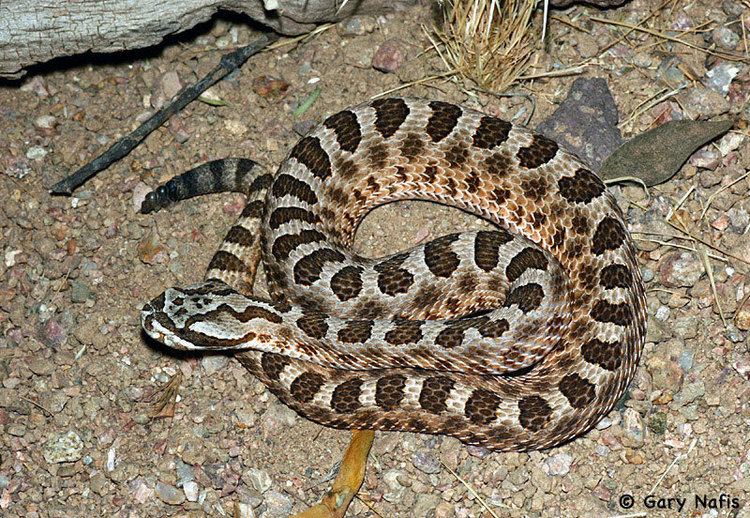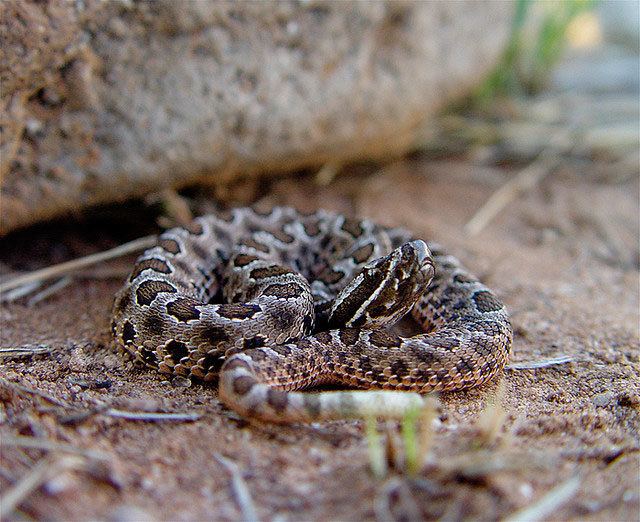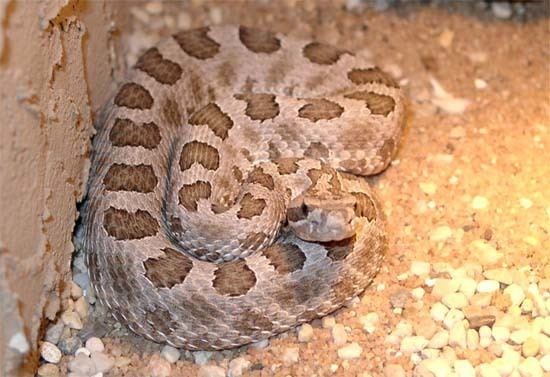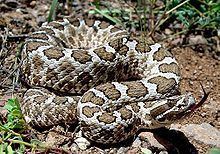Suborder Serpentes Subfamily Crotalinae Phylum Chordata Rank Subspecies | Subphylum Vertebrata Higher classification Massasauga Order Scaled reptiles | |
 | ||
Scientific name Sistrurus catenatus edwardsii Similar Massasauga, Sistrurus, Snake, Sistrurus catenatus, Reptile | ||
Sistrurus catenatus edwardsii
Sistrurus catenatus edwardsii is a subspecies of venomous pit viper endemic to the southwestern United States and northern Mexico. In places its range overlaps that of S. c. tergeminus, and intergrading of the two subspecies is not unknown.
Contents
- Sistrurus catenatus edwardsii
- Etymology
- Description
- Geographic range
- Habitat
- Behavior
- Feeding
- Venom
- Conservation status
- References

Sistrurus catenatus edwardsii
Etymology

The subspecific name, edwardsii, is in honor of Colonel Dr. Lewis A. Edwards (1824-1877), a U.S. Army surgeon, who collected the type specimen.
Description

This subspecies is more slender and smaller than S. c. tergeminus, reaching a maximum length of 53 centimetres (21 in).
The color pattern consists of a light gray or white base color, with dark gray or gray-brown blotches. They have a distinctive, dark stripe that runs along the side of the head which passes over the eye. Their rattles are significantly higher pitched than those of larger species of rattlesnake, sometimes giving them the nickname buzztail.

Compared to S. c. tergeminus, it is paler in color, and its belly is nearly white. Midbody, it has 23 rows of dorsal scales instead of 25, as well as fewer ventral scales and dorsal blotches.
Geographic range

Found in the United States extreme southeastern Arizona, central and southern New Mexico, western Texas about as far north and east as the Colorado River, in the Rio Grande Valley, in many of the Gulf Coast counties about as far north as Brazoria, and on several barrier islands including North Padre Island, Matagorda Island and San José Island. In addition, isolated populations have been reported in northeastern Mexico. The type locality is listed as "Tamaulipas ... S. Bank of Rio Grande ... Sonora."
Habitat
Primarily found in rocky, semi-arid and arid areas. According to Conant (1975), it is mostly found in desert grasslands.
Behavior
They are primarily nocturnal, especially during the summer months when it is too hot for them to be active, but they will sometimes be found out sunning themselves.
Feeding
Their diet consists primarily of rodents, lizards and frogs.
Venom
Drop for drop, massasauga venom is more potent than that of many larger species of rattlesnake, but due to the lower yield (the amount it is capable of delivering in a single bite) its potential for harm is greatly reduced. They are not considered to be deadly, but the venom is a powerful cytotoxic venom which can cause swelling, necrosis, damage to the skin, and severe pain. Medical treatment should be sought immediately for any venomous snake bite. The antivenin CroFab, while not type specific, can be used to treat severe envenomations from massasaugas.
Conservation status
The desert massasauga is listed as a species of concern in Colorado, due to its limited range in the state, and it is protected by Arizona state law. It is listed as a sensitive species by the United States Forest Service.
